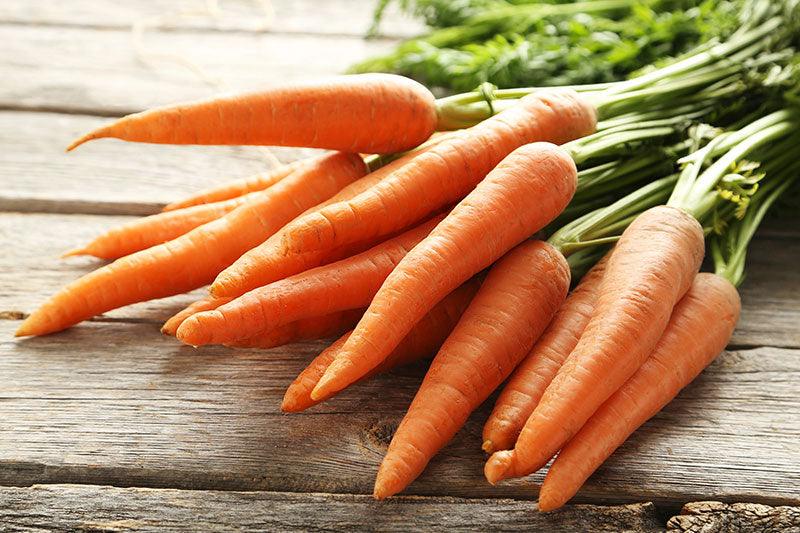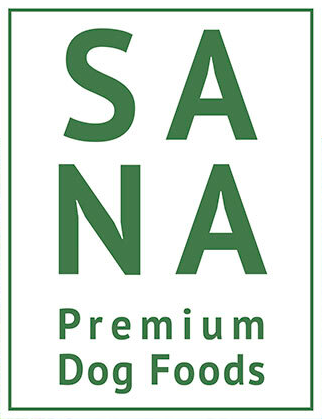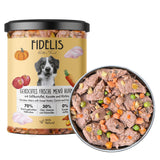6 x Kurczak z słodkimi ziemniakami, marchewką i dynią – w szklanym słoiku
Subcribe to back in stock notification
- Produktinformation
- Co jest w składzie i dlaczego?
- Dlaczego w szkle?
- Zalecenia dotyczące karmienia
Łatwe i lekkostrawne danie składające się w 70% z delikatnie ugotowanego kurczaka, połączonego z chrupiącymi batatami, świeżymi warzywami i pysznymi owocami. Uzupełnione cennymi, naturalnymi minerałami i cennym olejem lnianym. Całość dopełnia odrobina szałwii.
Do naszego świeżego menu z kurczakiem używamy wyłącznie świeżych składników spożywczych w naszej własnej manufakturze. Wysokiej jakości mięso z kurczaka i podroby gotujemy powoli w niskiej temperaturze. Dopiero potem mieszamy blanszowane bataty, marchew, groszek, dynię i jabłka, a także olej lniany, dziką różę, wodorosty, drożdże piwne, mączkę z wodorostów i szałwię z ugotowaną karmą. Dzięki temu smak i składniki odżywcze pozostają w pełni zachowane.
Bez wysokich temperatur, bez wypełniaczy, bez sztucznych dodatków witaminowych, bez ekstrudowania, bez sterylizowanych puszek. Rezultat: jak domowej roboty zdrowa karma z pełnymi wartościami odżywczymi pochodzącymi z świeżych składników, która smakuje tak dobrze, jak wygląda. 100% natura i 0% sztucznych dodatków. Opracowane we współpracy z weterynarzami i stworzone z miłością. Prosto – najlepsza karma dla Twojego psa. Tak powstaje niezrównane, zdrowe świeże menu dla Twojego psa. Jak gotowane w domu.
Skład
70% gotowanego kurczaka (z czego 80% mięsa z kurczaka, 20% podrobów z kurczaka: serce, nerki, żołądek, wątroba), 7% batatów, 7% marchwi, 6% groszku, 4% jabłek, 3% dyni, 1,9% oleju lnianego, 0,4% dzikiej róży, 0,4% wodorostów, 0,1% drożdży piwnych, 0,1% mączki z wodorostów, 0,1% szałwii.
Składniki analityczne
Białko 12,1%, Tłuszcz surowy 5,6%, Wilgotność 69,4%, Popiół surowy 4%, Błonnik surowy 0,6%.
Pasza uzupełniająca dla psów.
Twój pies podziękuje Ci za zdrową i różnorodną dietę, w tym wzmocniony system odpornościowy, lśniącą sierść, mniej problemów z trawieniem, lepsze samopoczucie i wyższą witalność. Magnez i potas zawarte w mięsie z kurczaka są ważne dla różnych procesów metabolicznych.
Więcej interesujących szczegółów na temat poszczególnych składników i ich pozytywnych właściwości znajdziesz w zakładce „Co jest w składzie i dlaczego?”.

Świeżo ugotowany kurczak (70%, z czego 80% mięsa z kurczaka i 20% podrobów z kurczaka: serce, nerki, żołądek, wątroba)
Mięso z kurczaka jest szczególnie chude i oferuje wiele korzyści dla naszych czworonogów: Dostarcza wysokiej jakości białka, nie mając zbyt wielu kalorii. Jest bogate w kwasy tłuszczowe Omega-6, wspiera zdrowie skóry i zapewnia lśniącą sierść. To doskonałe źródło niezbędnych aminokwasów oraz glukozaminy, która wspomaga zdrowie kości.

Bataty (7%)
Bataty są uznawane przez amerykańską organizację non-profit Center for Science in the Public Interest (CSPI) za najzdrowsze warzywo na świecie. Największe korzyści z batatów to ich wysoka zawartość związków roślinnych, które chronią przed wolnymi rodnikami. Są źródłem minerałów i witamin oraz zawierają wysokiej jakości błonnik.

Marchew (7%)
Oprócz energii, błonnika i niskiej kaloryczności, marchewki są zdrowe, ponieważ są doskonałym źródłem witamin i minerałów. Szczególnie warto wspomnieć o witaminie A i biotynie. Marchewki są bogate w beta-karoten, który w organizmie przekształca się w witaminę A.

Groszek (6%)
Groszek zawiera wiele witamin. Oprócz beta-karotenu, groszek oferuje szczególnie dużo witamin z grupy B, a także witaminę C. Można go również pochwalić za zawartość minerałów: magnez, żelazo, wapń i cynk sprawiają, że jest to wyjątkowo zdrowa warzywna przekąska.

Jabłko (4%)
Jabłka są doskonałe dla zdrowia, ponieważ zawierają wiele witamin, minerałów i pierwiastków śladowych, takich jak potas, wapń, witaminy z grupy B, witaminę C, witaminę E, kwas foliowy, pektyny i polifenole.

Dynie (3%)
Dynia dostarcza wielu witamin, w tym beta-karotenu (prekursora witaminy A), witaminy C i witaminy E. Zawiera również minerały, takie jak potas, magnez, wapń i żelazo, oraz błonnik, który wspomaga trawienie.

Olej lniany (1,9%)
Olej lniany zawiera dużą ilość nienasyconych kwasów tłuszczowych, takich jak Omega-3 i kwas linolowy. Zgodnie z badaniami naukowymi, olej lniany może działać profilaktycznie i łagodząco przy chorobach, takich jak cukrzyca, artretyzm czy podwyższony poziom cholesterolu. Jednakże dotychczas nie udowodniono jego skuteczności.

Dzikiej róży (0,4%)
Poza witaminą C, dzika róża zawiera także wiele innych składników, które mają korzystny wpływ na zdrowie, takich jak kwasy owocowe, olejki eteryczne, pektyny, taniny, krzemionka, przeciwutleniacze, likopen, flawonoidy, witaminy A, B1, B2, B3 i E. Pomaga w leczeniu infekcji układu moczowego, działa przeciwzapalnie i poprawia krążenie.

Wodorosty (0,4%)
Wodorosty dostarczają wielu cennych składników odżywczych, w tym witamin z grupy B, witaminy C, jodu, żelaza, magnezu, wapnia i cynku. Wspomagają układ trawienny, wspierają zdrowie skóry i pomagają przy alergiach pokarmowych.

Drożdże piwne (0,1%)
Drożdże piwne zawierają witaminy z grupy B oraz białka, minerały i pierwiastki śladowe. Dzięki wysokiej zawartości witaminy B1 drożdże piwne pomagają poprawić kondycję skóry, sierści oraz pazurów u psów, a także wspomagają trawienie.

Mączka z wodorostów (0,1%)
Mączka z wodorostów zawiera wiele witamin, minerałów i pierwiastków śladowych, takich jak jod, magnez, wapń, żelazo, a także aminokwasy, które wspierają metabolizm psów i pomagają w eliminowaniu toksyn z organizmu.

Szałwia (0,1%)
Szałwia to zioło, które wspiera zdrowie układu pokarmowego, działa przeciwzapalnie i pomaga w walce z infekcjami. Ponadto szałwia ma działanie antyoksydacyjne i jest stosowana w leczeniu problemów z układem oddechowym, stanami zapalnymi, a także przy problemach trawiennych.
Nasze gotowane, a następnie mrożone menu składa się wyłącznie z wysokiej jakości świeżych składników spożywczych: czystego mięsa mięśniowego i zdrowych podrobów, świeżych warzyw i owoców, wybranych olejów i ziół, w starannie dobranych proporcjach, gotowane na parze - bez wysokiej temperatury, bez wysokiego ciśnienia i bez sztucznych dodatków, konserwantów, polepszaczy smaku czy aromatów.
Jednakże, ponieważ wielu klientów nie ma dostępu do chłodzenia, czy to z powodu braku miejsca, czy też podczas wakacji, zastanowiliśmy się, jak nasze menu utrzymać bez mrożenia.
Szybko okazało się, że dla nas sterylizacja w puszkach nie wchodzi w grę. Nikt nie wpadłby na pomysł, by podać dziecku jedzenie z puszki, dlaczego miałoby to być inne dla naszych psów? I tylko dlatego, że inni producenci oferują karmę w puszkach, nie oznacza, że jest ona dobra.
Dzięki temu, że nasze mięso w menu jest gotowane na parze, możemy przeprowadzić sterylizację w znacznie niższej temperaturze i krótszym czasie w szkle. Dzięki temu mięso pozostaje w kawałkach i nie zamienia się w papkę.
W wyniku gotowania na parze podczas sterylizacji wydziela się mniej wody, więc nie trzeba dodawać sztucznych środków zagęszczających, które są stosowane przez prawie wszystkich producentów karm w puszkach. Te środki są potencjalnymi alergenami lub przyczyną innych chorób.
Używając wyłącznie świeżych surowców bez dodatków zagęszczających, nasze świeże menu w szkle pachnie świeżo i smacznie, a nie jak typowa „karma z puszki”.
Dzięki delikatnemu gotowaniu składniki odżywcze z zdrowych surowców są lepiej zachowane, a dodawanie sztucznych witamin jest zbędne przy zróżnicowanej diecie.
Nasze świeże menu w szkle ma także inne zalety w porównaniu z karmą w puszkach. W szkle nie ma ryzyka, że kawałki metalu lub pozostałości powłokowych oderwą się i osadzą w karmie. Pozostałości z puszek mogą powodować raka i inne choroby. W szkle nie występują żadne pozostałości. Dlatego żywność dla niemowląt jest oferowana tylko w szkle.
Szklane słoje są ponownie zamykane, a nieprzyjemny zapach po otwarciu puszki jest przeszłością.
Rezultat: świeżo pachnące, zdrowe pełnowartościowe menu dla Twojego psa, zapewniające zdrową, zróżnicowaną i lekkostrawną dietę. Tak samo wygodne jak karma w puszkach, tylko o wiele lepsze.
Zalecenia dotyczące karmienia
Szczenię do 8. miesiąca: ok. 4,5%
Pies do 15 kg: ok. 2,5 - 3%
Pies powyżej 15 kg: ok. 2,5 - 3%
Procentowa wartość odnosi się do wagi ciała psa. Na przykład pies ważący 20 kg, przy zalecanej dziennej dawce 2,5%, potrzebuje 500 g karmy dziennie.
Podane wartości to przybliżone zalecenia dotyczące ilości karmy dla psów w normalnej aktywności, niezoperowanych i zdrowych. Indywidualne zapotrzebowanie może się różnić o 50% w zależności od wieku, rasy lub aktywności psa. Są to tylko wskazówki do oszacowania dziennej dawki.
Zmiana diety
Fidelis zaleca natychmiastową zmianę diety. Pomiń jedno posiłek (najlepiej wieczorem) i przy następnym posiłku rozpocznij karmienie naszym jedzeniem. Przez pierwsze 14 dni karm tylko jednym rodzajem karmy, aby żołądek psa mógł przyzwyczaić się do nowego jedzenia. Po dwóch tygodniach zalecamy karmienie różnych smaków na przemian.
Dostawa i przechowywanie
Nasze świeże menu w szkle dostarczane jest w specjalnym opakowaniu, zawierającym 6 słoików. Dlatego minimalna ilość zamówienia wynosi 6 słoików, a potem zawsze po 6 kolejnych. Nasze świeże menu jest pakowane i dostarczane w lodzie, aby zapewnić świeżość.











